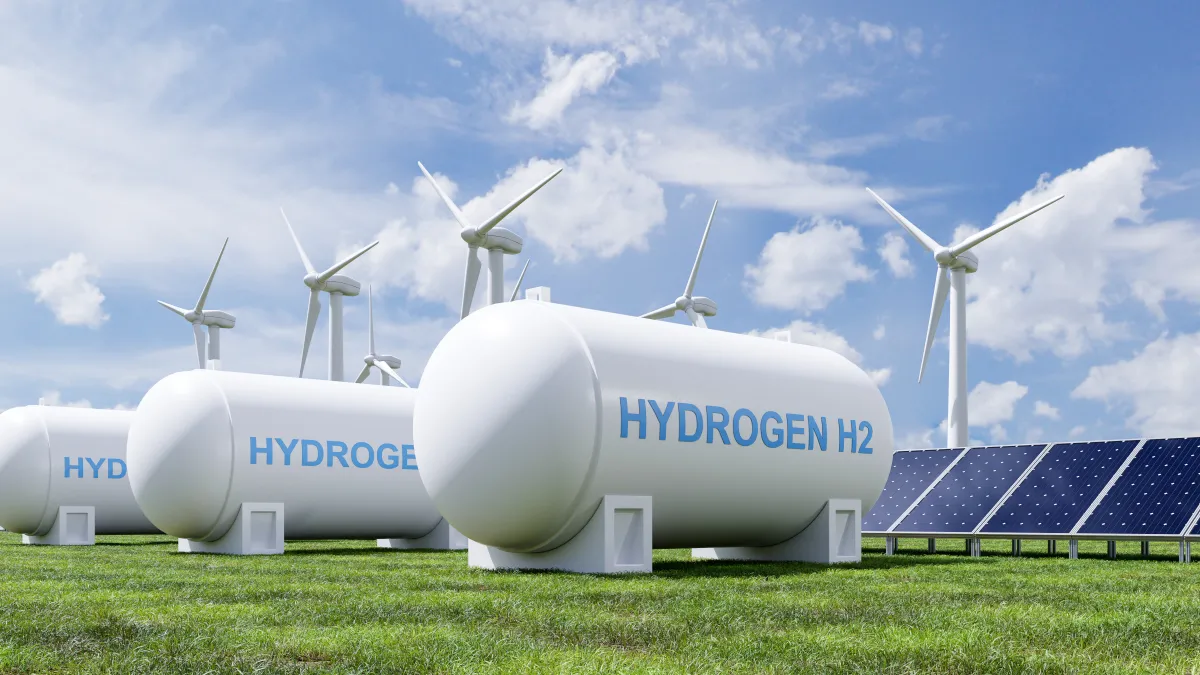Dive Brief:
- California Gov. Gavin Newsom, D, this week instructed his Office of Business and Economic Development to put together a development strategy for the state’s hydrogen market, using an “all-of-government approach” to get the industry up and running.
- Clean hydrogen is a critical component of California’s climate goals, and the state is competing to become a federally-funded hydrogen hub under an $8 billion federal program that stems from the bipartisan infrastructure law.
- While Newsom’s strategy is a step forward for the industry, its effective implementation hinges on cohesive legislative and regulatory support, Nick Connell, interim executive director of the Green Hydrogen Coalition, said in a statement. “Without comprehensive backing from the policy landscape, the strategy's influence could potentially be constrained,” he added.
Dive Insight:
The hydrogen market development strategy will be developed with support from state agencies, like the California Public Utilities Commission and the California Energy Commission, and will look at strategies such as new financing models, changes to permitting processes, and procurement initiatives that will get more hydrogen projects in the ground.
In a previous executive order, issued in May, Newsom moved to create an infrastructure strike team that would focus on streamlining infrastructure projects in California.
“California is all in on clean, renewable hydrogen – an essential aspect of how we’ll power our future and cut pollution,” Newsom said in a statement, adding, “this strategy will lay out the pathway for building a robust hydrogen market to help us fully embrace this source of clean energy.”
California’s current hydrogen market predominantly centers around transportation applications, and discussions regarding its application in the power sector and industries is underway, Connell said.
Newsom’s instructions to create a hydrogen market development strategy signals California’s advocacy for “transformative change” in the hydrogen domain, he said.
However, building out the hydrogen market in California faces multiple challenges, according to Connell, including the need to integrate renewable hydrogen into the Renewable Portfolio Standards framework, as well as embed it into long-term gas planning and streamline permitting processes for renewable hydrogen production.
Efforts are also being made at the federal level to build out hydrogen production, infrastructure, and research and development, especially after the passage of the Infrastructure Investment and Jobs Act in 2021, which included around $9.5 billion in funding for clean hydrogen. In June 2022, the U.S. Department of Energy unveiled a plan to create around six to 10 “hydrogen hubs” around the country, each receiving up to $1.25 billion in federal funding.
The Biden administration’s actions on the hydrogen front have set a global standard for fostering market growth, Connell said, and national best practices on hydrogen policy could also serve as a model for California. One example is shifting the emphasis from the “color spectrum” of hydrogen to prioritizing carbon intensity, which will allow the state to more precisely assess the fuel’s environmental impact.
The state could also learn from the national emphasis on regional networks with large-scale clean hydrogen production and end-uses that are in close proximity to one another, he said.
“By concentrating on regional hubs, the state can leverage the infrastructure investments it has made, drive scalability, and catalyze market expansion. Simultaneously, this approach aligns with the values of equity, inclusion, and environmental justice by addressing localized opportunities,” Connell added.















